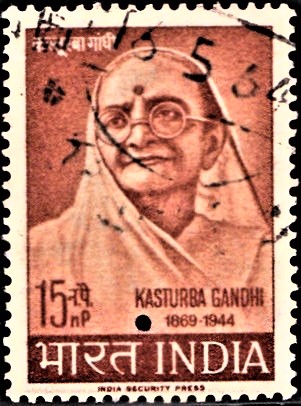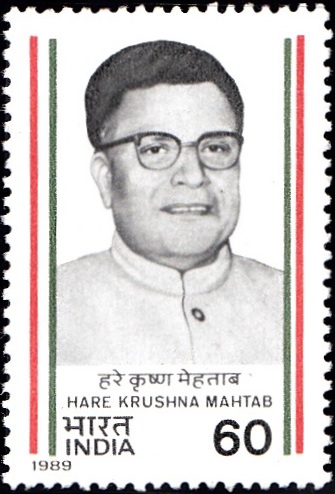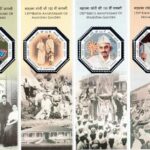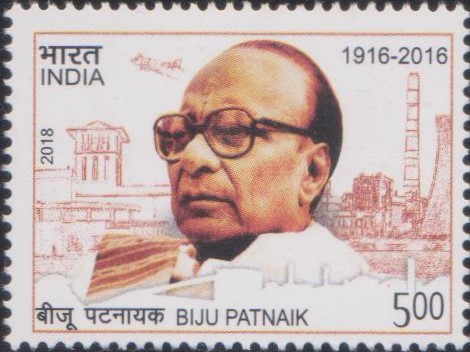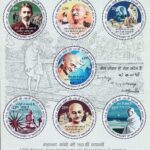
First Visit of Mahatma Gandhi to Odisha
A commemorative postage stamp on 100 Years of First Visit of Mahatma Gandhi to Odisha :
 Issued by India
Issued by India
Issued on Mar 23, 2021
Issued for : Department of Posts is pleased to issue a Commemorative Postage Stamp on 100 Years of first visit of Mahatma Gandhi to Odisha.
Credits :
Stamp/FDC/Brochure/Cancellation Cachet : Shri Sankha Samanta
Type : Stamp, Mint Condition
Colour : Multi Colour
Denomination : 500 Paise
Stamps Printed : 504000
Printing Process : Wet Offset
Printer : Security Printing Press, Hyderabad
About :
- Mahatma Gandhi had already become famous before he came to Utkal, as it was called then. It was divided into four different entities – a part in Bihar, another in Madras Province, third part in Central Province and the fourth one was Princely State. Odisha was yet to become a homogenous state. Involvement of Mahatma Gandhi in Champaran (Bihar) to free Indigo farmers from bondage had infused new energy in the poor farmers of Odisha. They saw in him a saviour. Therefore, when Utkalmani Gopabandhu Das invited Gandhiji to visit Odisha, he agreed to spend a week. He had heard about the abject poverty, affliction and hunger that was rampant in most parts of different districts. Repeated flood and drought had ravaged most parts of Odisha.
- Gandhiji arrived at Cuttack on 23rd March, 1921. It was Dola Purnima Day. Cuttack town with a population of around 20 thousand had poured at the Railway Station to have a glimpse of the Mahatma clad in kurta, a dhoti worn like a common Gujarati with a cap on his head. He alighted from the train along with Kasturba, son Devdas and Babu Rajendra Prasad. The huge crowd welcomed him and took out a procession to Swaraj Ashram which was around 15 km away. That afternoon, Gandhiji addressed a huge gathering on the sands of river Kathajodi. Amrita Bazar Patrika had reported then that there was a huge crowd. A lone photograph of that meeting is the only photo which was published in Odia daily ‘Samaj’ that was edited by Utkalmani Gopabandhu Das himself.
- Gandhiji spoke about non-cooperation against foreign goods, women education and teaching in local language. He also addressed the Muslims at Qadam-E-Rasool & women groups at Binod Behari. Later, he left for Bhadrak which is 100 kms away. He addressed a huge gathering at Bhadrak that was organised by a young student leader Harekrushna Mahtab. Later, Gandhiji accompanied by Gopabandhu, Mahtab and Gopabandhu Choudhuri went to Puri and then he went to Berhampur and addressed a huge gathering there.
- His sojourn to Odisha practically energized the Non-Cooperation movement and strengthened the cause of freedom struggle. Large section of youth participated in the movement. Women folk regularly spun Charkha and propagated the use of Khadi. Cloths of foreign origin were abandoned. Such was the magical presence of Gandhiji that Odisha woke up from slumber and plunged itself in the national movement. Gandhiji had shown a path to them to achieve something in life, inculcated in them a sense of purpose. It was Gandhiji who inspired them to serve the poor, lift them out of misery and make their life worth living.
- That day (23rd March 1921) was the turning point in Odisha’s history. It is in its hundredth year now.
- Today’s youth, women, intelligentsia and common folk may not be able to comprehend the challenges that the society had faced a hundred years ago in the colonial rule. Yet, when Gandhiji came, thousands of people gathered to have a glimpse of him, hear him and the message was sent far and wide that here is the Mahatma who is moving around the country to awaken the masses to rise against an oppressive foreign government with a force that is called non-violence – Ahimsa. A weapon that was wielded fearlessly by the people to fight against the British Raj. This day cannot be forgotten.
- Text : Referenced from content provided by Sh. Bhartruhari Mahtab.
Subscribe
Login
0 Comments



